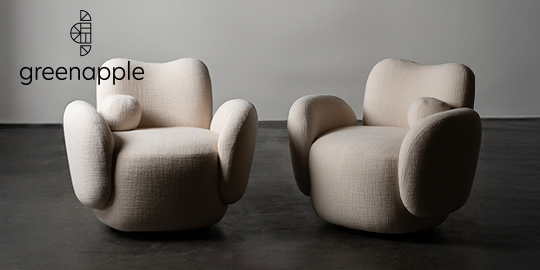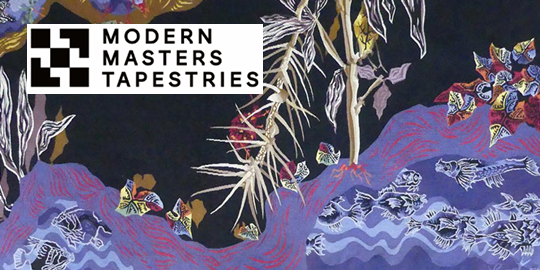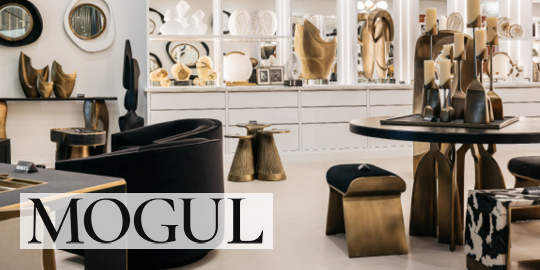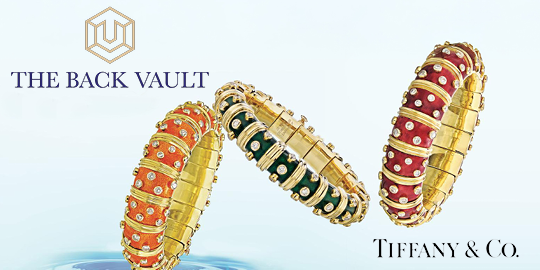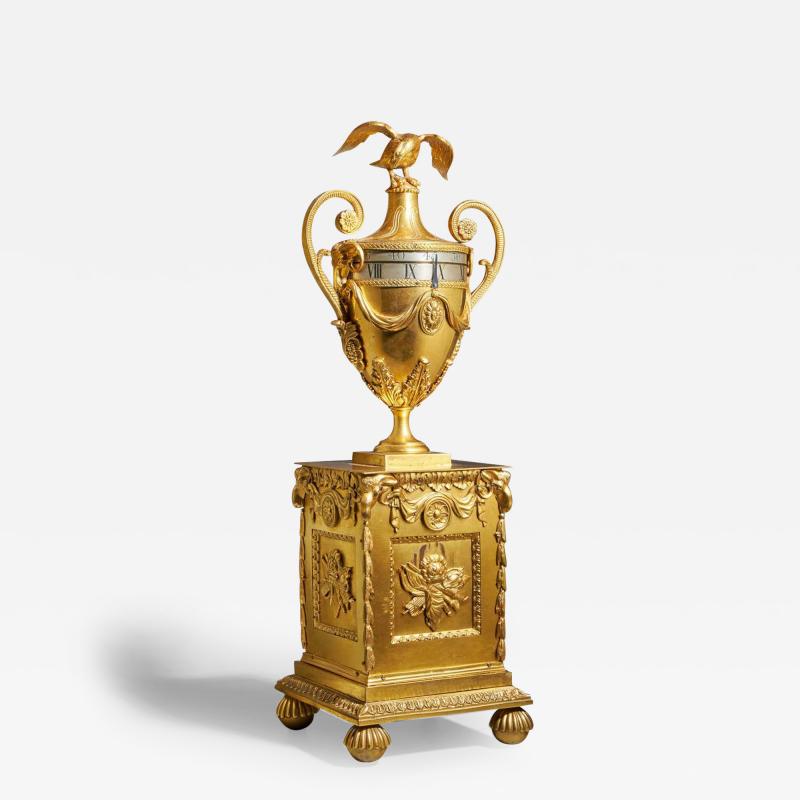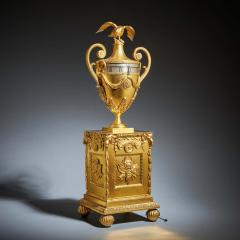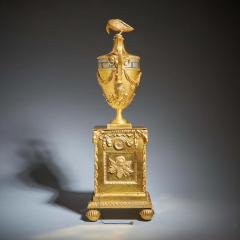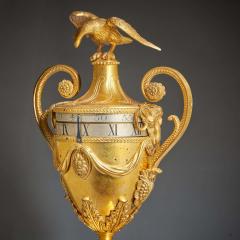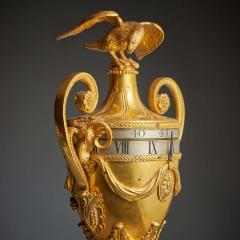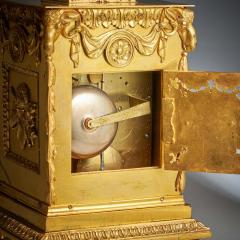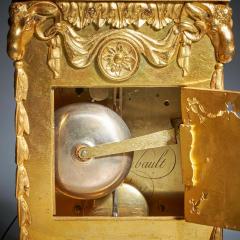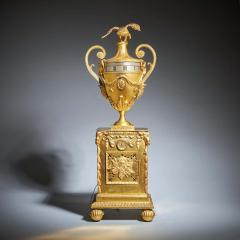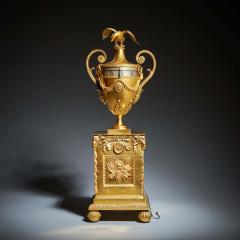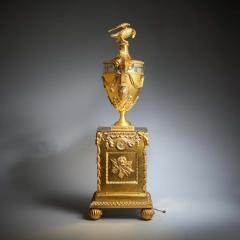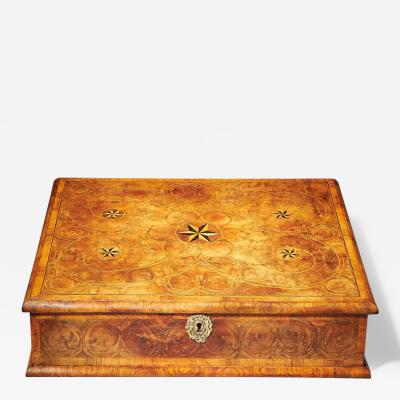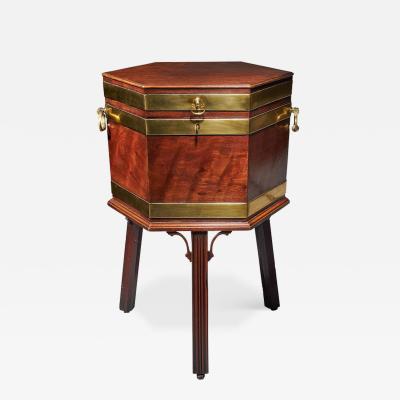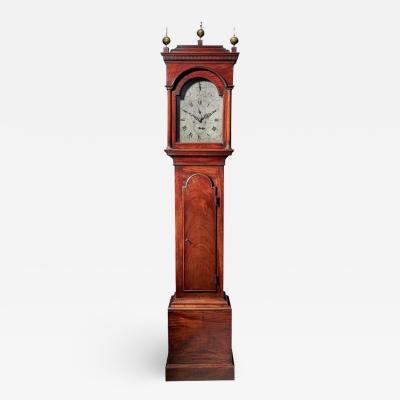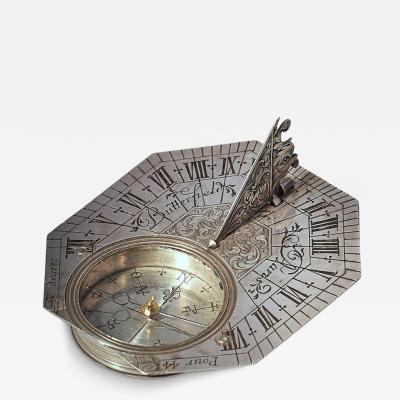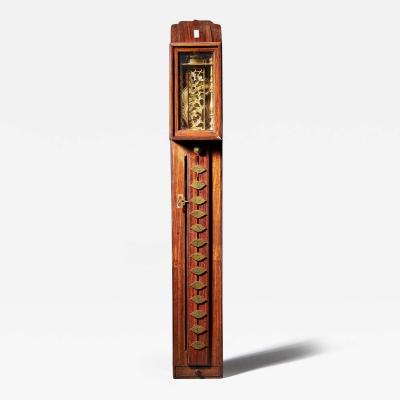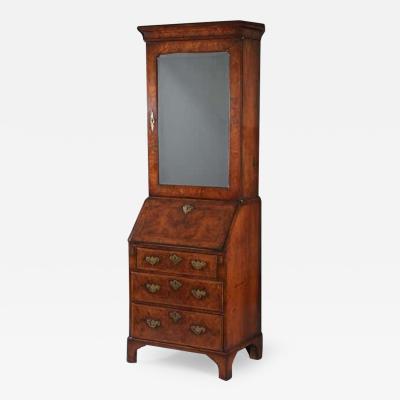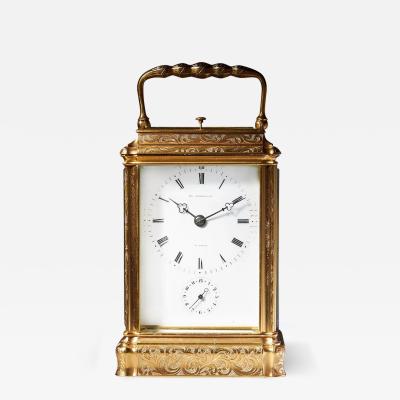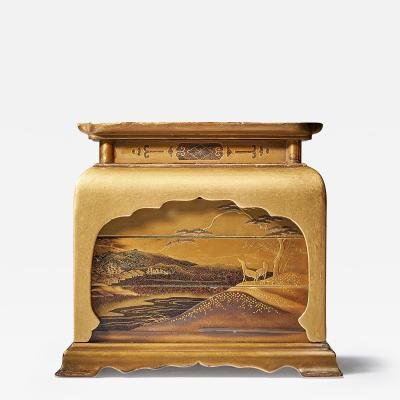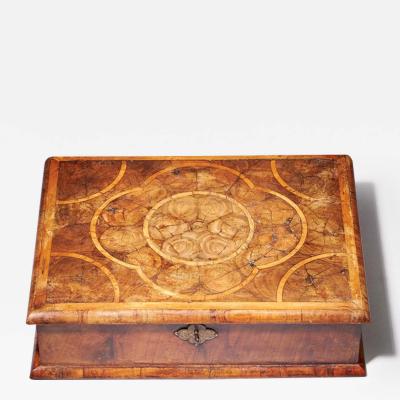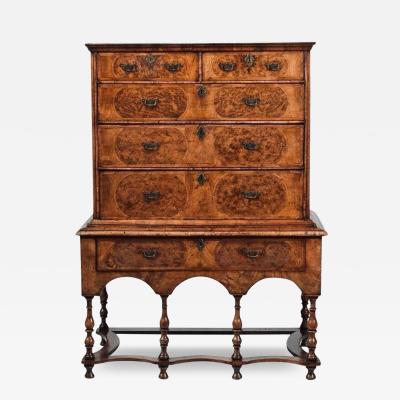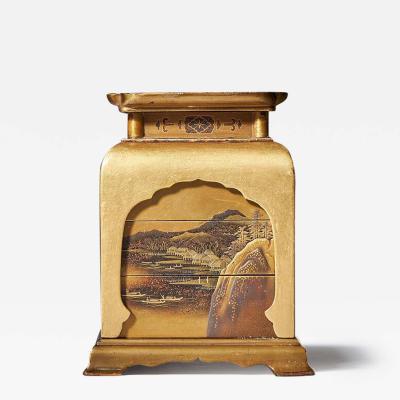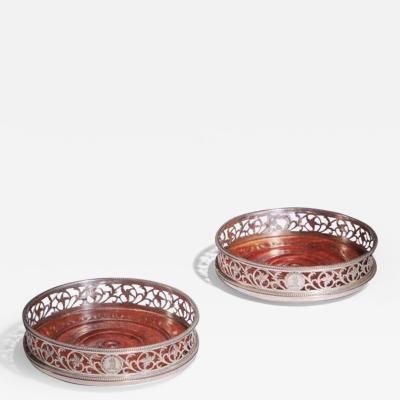A Unique 18th Century Georgian Urn Clock by Paul Rimbault, Soho London, 1770
-
Description
A unique and exceptional neoclassical urn clock by Paul Rimbault, London, circa 1770. This singular example of a pendule à cercles tournants stands as a masterpiece of English clockmaking and design from the Georgian period.
The ormolu case is of remarkable quality, with a richly ornamented square plinth base containing the movement, surmounted by an elegant lidded urn with bold scrolled handles terminating in anthemion motifs. Ram’s heads frame either side of the urn and are echoed in the decorative corners of the base. The classical design, inspired by the work of the celebrated architect and designer Robert Adam, is further embellished with finely cast drapery swags, foliate details, and classical medallions. While there is no direct connection between Rimbault and Adam, this clock reflects the influence of Adam’s neoclassical style, which shaped the decorative arts in Britain during the period and inspired clockmakers, bronze casters, and artisans alike. The urn is crowned with an exquisitely cast eagle finial, a further nod to classical symbolism.
The time is displayed through two silvered brass rotating rings set into the body of the urn: the lower ring showing Roman numerals for the hours, the upper ring marked in Arabic numerals for every five minutes, with additional minute divisions. A delicate blued steel pointer indicates the time. The winding holes are cleverly concealed by a sliding shutter adorned with martial motifs, echoed by the ornament on the rear door.
The eight-day double chain fusee movement, mounted between rectangular plates, features an anchor escapement with a short pendulum and stirrup regulation. The strike train chimes the hour and the half-hour on a single bell, with repeat striking on demand via a pull cord. The strike can be silenced through an arbor on the backplate.
This clock is not only a rare survival but a unique piece, combining the finest elements of English craftsmanship, technical ingenuity, and neoclassical design. A true collector’s treasure of museum quality.
Paul Rimbault was a member of a family of clockmakers of Huguenot descent, who excelled in clockmaking. There are some very special clocks known by his hand. He worked from Denmark Street, Soho, from 1770 until his death in 1785. His brother Stephen was also a prolific maker, notably of musical and automaton clocks, with an exceptional example in the Ashmolean Museum in Oxford.
£34900 -
More Information
Origin: England Period: Pre 18th Century Condition: Good. Wear consistent with age and use. Fully restored in perfect working condition for generations to come. Number of Pieces: 2-3 Styles / Movements: Traditional Patterns: Traditional Incollect Reference #: 789017 -
Dimensions
W. 4.72 in; H. 19.29 in; D. 4.72 in; W. 12 cm; H. 49 cm; D. 12 cm;
Message from Seller:
Alexander George Fine Antique Furniture, based in rural Oxfordshire, specializes in exceptional 17th- and 18th-century English furniture from renowned cabinet-makers like Thomas Chippendale, Coxed & Woster, and Gerrit Jensen. With a focus on authenticity, provenance, and expert conservation, we serve collectors worldwide with trust and integrity. Contact: +44 1367 243304 | sue.austin@alexandergeorgeantiques.com |





